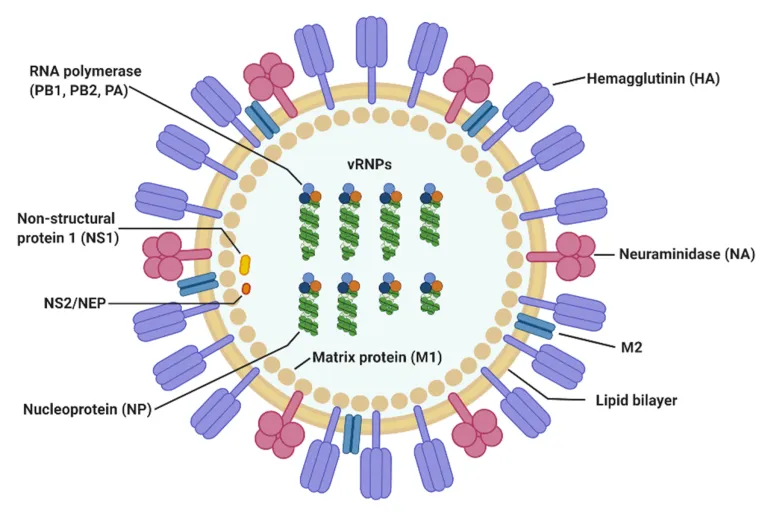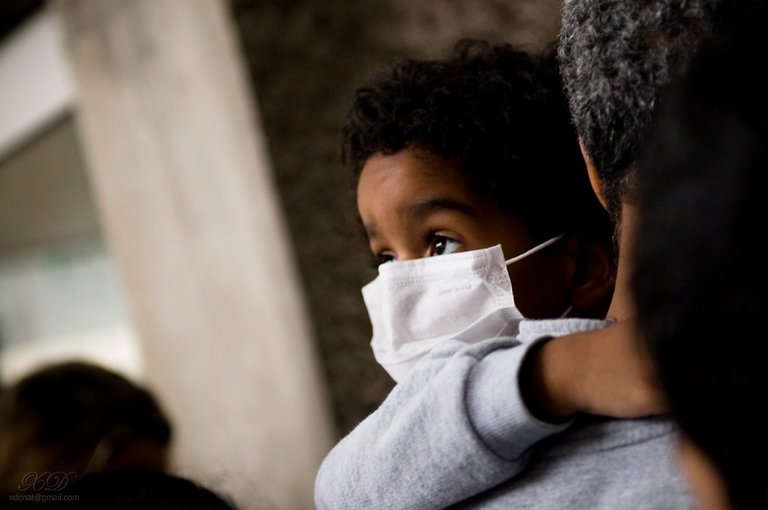Human and viral threats are like one chapter one episode because we have faced numerous viral threats with a few being very deadly and so many come with terrible symptoms. One of the viral threat we have suffered is Small pox that plagued us for centuries killing over 300 million people in the 20th century. You might wonder where this virus is currently since you haven't heard of it in recent times and this is because in the year 1980, it was declared eradicated with its last naturally occurring case being recorded in 1977.
Small pox aside, we have also suffered from viruses like the Herpes virus, HIV virus, and many others but with the help of vaccines and drugs, we have been able to put them on check but in all this, one virus tends to always come back in different strains and the virus is known as influenza.
Influenza has been for a very long time, at least for centuries and it was part of the pandemic that struck humans in 1918, leading to the death of about 50 million people around the world. This virus always come back causing people to be sick every year, and it looks lie it is relentless as it mutates and change yearly but why does this virus always come back.
There are a lot of respiratory viruses and the influenza virus is one of them and it is a RNA virus and RNA viruses are known for their ability to mutate very fast and this is why we usually have new strains of the same influenza virus every year but this doesn't mean that we have the same type of influenza virus because they can be grouped into Influenza type A, B, C, and D, where influenza type A affects humans and a wide range of animals, while type B infects only humans. Type C will have a mild infection on humans and animals but it is rare compared to A and B, and type D infects only animals.
The most common is the influenza A virus, and we always have an epidermic whenever a new influenza strain surfaces as a result of mutation. This virus is transmitted through respiratory droplets from people who have the virus either through cough, sneeze, or when they talk. If the droplet gets into the respiratory canal reaching the mucus membrane then the person already contracted the virus.
The virus has a surface spike protein and this is how we are able to divide the influenza type A into two types. One of the spikes is Hemagglutinin (HA), and the other is neuraminidase (NA). In the Hemagglutinin (HA) subtype there are 18 subtypes from H1 to H18, and in the neuraminidase (NA) type, there are 11 subtypes (N1 to N11). When the virus enters the respiratory tract, it targets the epithelial cells lining the respiratory tracts and with its spike it is able to bind to the receptors. The virus enters the cells using its membrane in a process known as endocytosis. When inside the cell, the virus uncoats and release its RNA where replication takes place.
One of the problems we have faced with the influenza virus causing it to appear every now and then is its ability to mutate very fast which scientists call Antigenic Shift and Antigenic Drift. I guess you must have heard what an antigen is before, possibly in high school biology bout there is also a high chance that you did not understand it because you just were looking at that prom partner of yours and not listening all through the period of the class so I will help explain it again. An antigen is the protein typically found in the surface of a pathogen that triggers antibodies to defend the body. In the case of the influenza virus, Hemagglutinin and neuraminidase are an example of antigen that the body's immune system fight against.
When the virus undergo antigenic drift, it has to do with small gradual changes in the influenza virus antigen, and the minor changes happen during the replication and his becomes a problem for the antibodies as the minor changes in the neuraminidase and Hemagglutinin structure leads to new virus strain which can evade the immune system of a person who was previously vaccinated against the virus. This is why vaccination needs to be updated so as to match new strains of the virus that are in circulation.
With antigenic shift, it is an immediate mutation or change that occurs when two different strains of the influenza virus fhe rom different species exchange genetic material. An example of an antigenic shift strain of the influenza virus was the 2009 H1N1 swine flu pandemic. So when next you are having the virus and you wonder why you continue to have it, remember that the virus is always changing it nucleic material as well as antigenic coating.
Read More
- https://www.cdc.gov/flu/about/viruses-types.html
- https://www.who.int/news-room/fact-sheets/detail/influenza-(seasonal)
- https://www.cdc.gov/flu/about/index.html
- https://www.ncbi.nlm.nih.gov/pmc/articles/PMC2862331
- https://www.ncbi.nlm.nih.gov/books/NBK22148
- https://www.bcm.edu/departments/molecular-virology-and-microbiology



Thanks for your contribution to the STEMsocial community. Feel free to join us on discord to get to know the rest of us!
Please consider delegating to the @stemsocial account (85% of the curation rewards are returned).
Thanks for including @stemsocial as a beneficiary, which gives you stronger support.